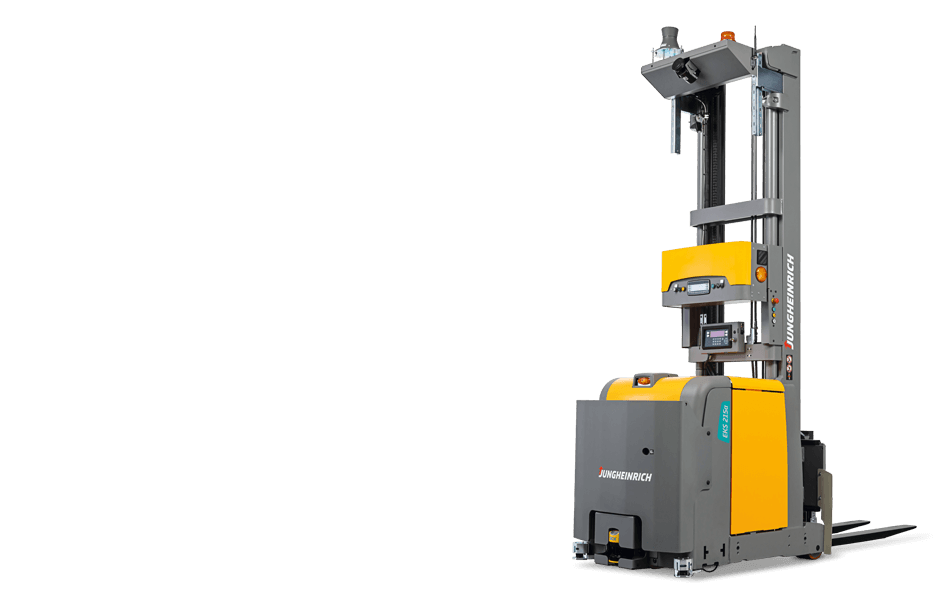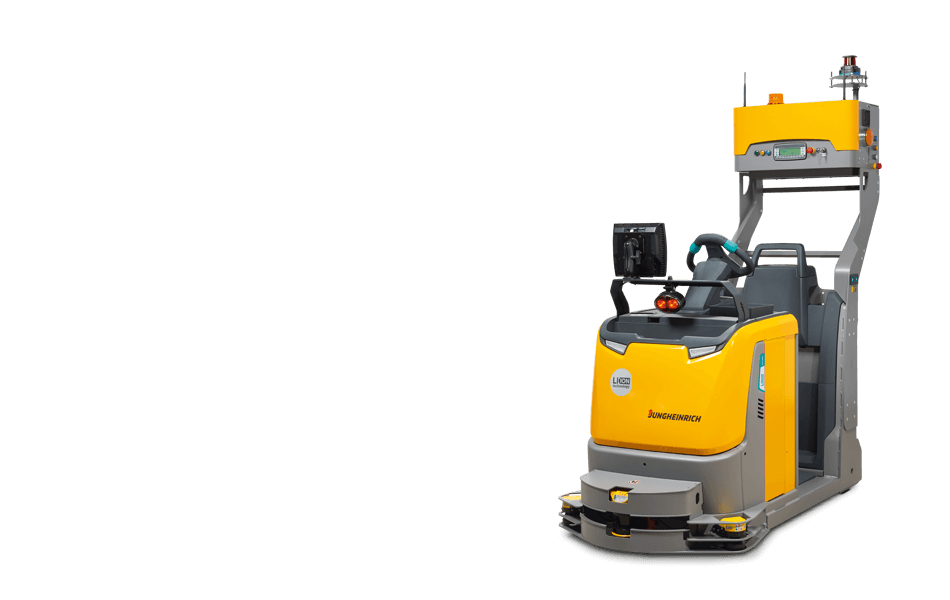What Are AGVs?
Automated guided vehicles are a relatively new addition to the material handing industry. We answer what AGVs are and other FAQs including how AGVs work, types of AGVs and if they're are a good fit for you.
Because AGVs are a relatively new addition to the material handing industry, many people have questions regarding AGVs. What does AGV stand for? How do they work? Why are they becoming so popular? This article addresses the most common questions associated with AGVs.
What are AGVs?
AGVs, also known as Automated Guided Vehicles, are load carriers that move material in a warehouse or facility without the need for an onboard operator. AGVs use software and guidance systems to transport loads to exact specifications in order to maximizes efficiency.
Consistent and recurring internal transport tasks are ideally suited for automation, which make AGVs a great addition to many material handling operations. This is because AGVs manage the most repetitive forklift operator tasks, allowing the humans in your facility to focus on more complex and specific tasks. AGVs provide the foundation for enhanced efficiency and optimized processes by helping to increase productivity and reduce costs.
While AGVs can work independently of humans, they are designed to work seamlessly in mixed operations with manual trucks and pedestrians. Many AGVs can also be operated manually. This versatility makes them a great option for warehouse managers looking for equipment that can perform multiple tasks.
How do AGVs work?
Most AGVs are battery powered and operate along ”virtual” paths. AGVs may follow these paths by using magnetic tape or laser guided systems. AGVs may also have optical sensors to detect obstructions and moving objects in their paths.
A computer-based software connects wirelessly to each AGV in a work environment to track each vehicle’s real-time location. This software can integrate with existing Warehouse Management Systems (WMS) or work in a standalone environment. The computer will then provide instructions or specific tasks for each AGV, which could include starting, stopping, changing speeds, turning, lifting, lowering and much more. This high level of coordination helps maximize the efficiency of each AGVs movement and reduce material handling costs in the long run.
Types of AGVs
Most AGVs can be used for multiple applications, such as towing and stacking loads. AGV models will also vary based on their towing and lift capacities.
The most common types of AGV forklifts include:
- Forklift AGVs – Forklift trucks that are converted or designed to operate autonomously.
- Unit Load AGVs – Also known as top carriers. Unit load AGVs are individual vehicles that transport loads using forks or a deck.
- Tow Tractor AGVs – Capable of pulling multiple trailers and larger loads autonomously.
- Automated Guided Carts – More commonly referred to as a “AGC”, these are carts that are ideal for assembly line and transportation work.
The following are some of the current Jungheinrich AGV systems that are on the market:
EKS 215a – High Level AGV Pallet Stacker

- Lift height: up to 236 inches (6,000 mm)
- Capacity: 3,300 lb (1,500 kg)
The EKS 215a high level stacker is a versatile AGV that is suitable for pallet transport, load stacking, and interfacing with racking and conveyors.
EZS 350a NA – AGV Tow Tractor

- Towing capacity: up to 11,000 lb (5,000 kg)
The EZS 350a NA tow tractor is a robust towing truck that is suitable for towing multiple trailers. Its compact dimensions make it great for use in narrow aisles.
Are AGVs a good fit for me?
AGVs can be used in nearly any industry that currently makes use of material handling equipment. Introducing AGVs to your business largely depends on your existing material handling system. Some important things to consider include your:
- Current intralogistics processes and requirements
- IT interfaces
- Required transport volume
- Condition of your source and destination points (pickup and drop-off)
- Existing ramps, lift platforms or low-clearance areas
From there, you can determine the most ideal types of AGVs that are suitable for your existing business. At Jungheinrich, we can help you perform a full analysis of your intralogistics process in which we leave no stone unturned. Then, we can help you determine if AGVs might be a good fit for you. Learn more by visiting our AGVS Solutions page.
Do AGVs require employee training?
Like all new equipment, your employees will need to be trained as to how to use new AGVs in your work environment. Although AGVs primarily work independently, your employees will need to be familiar with troubleshooting operations, charging and vehicle engagement.
Because most AGVs will work in mixed operation environments that contain pedestrians and manually operated trucks, it is important to familiarize your employees with AGVs. Necessary safety and operator training sessions should be planned and conducted from the start. By using Jungheinrich AGVs, key-operator training can be offered through Jungheinrich and your local dealer.
Partner with the best in the business
Jungheinrich has a proven track record of more than 60 years of technologically advanced forklift design experience, as well as more than 10 years of automation experience. When you partner with Jungheinrich, you work with experts who will develop the right automation solution for your workplace.
Find your local Jungheinrich dealer to get started.









